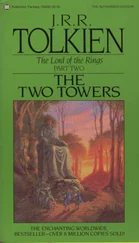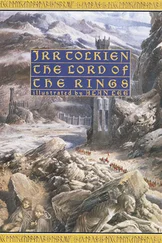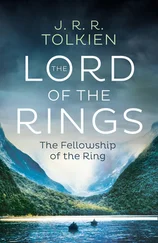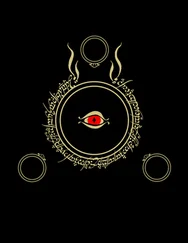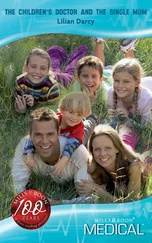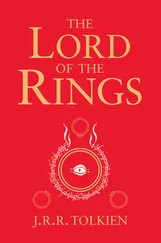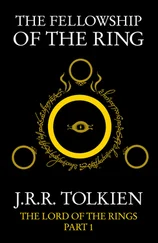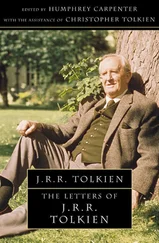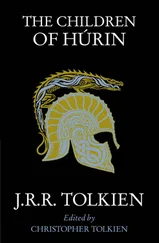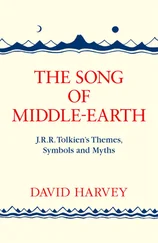From Túrin in Doriath the new text is a good deal changed in relation to that in Unfinished Tales. There is here a range of writing, much of it very rough, concerned with the same narrative elements at different stages of development, and in such a case it is obviously possible to take different views on how the original material should be treated. I have come to think that when I composed the text in Unfinished Tales I allowed myself more editorial freedom than was necessary. In this book I have reconsidered the original manuscripts and reconstituted the text, in many (usually very minor) places restoring the original words, introducing sentences or brief passages that should not have been omitted, correcting a few errors, and making different choices among the original readings.
As regards the structure of the narrative in this period of Túrin’s life, from his flight out of Doriath to the lair of the outlaws on Amon Rûdh, my father had certain narrative ‘elements’ in mind: the trial of Túrin before Thingol; the gifts of Thingol and Melian to Beleg; the maltreatment of Beleg by the outlaws in Túrin’s absence; the meetings of Túrin and Beleg. He moved these ‘elements’ in relation to each other, and placed passages of dialogue in different contexts; but found it difficult to compose them into a settled ‘plot’ – ‘to find out what really happened’. But it seems now clear to me, after much further study, that my father did achieve a satisfying structure and sequence for this part of the story before he abandoned it; and also that the narrative in much reduced form that I composed for the published Silmarillion conforms to this – but with one difference.
In Unfinished Tales there is a third gap in the narrative on p. 96: the story breaks off at the point where Beleg, having at last found Túrin among the outlaws, cannot persuade him to return to Doriath ( †in the new text), and does not take up again until the outlaws encounter the Petty-dwarves. Here I referred again to The Silmarillion for the filling of the gap, noting that there follows in the story Beleg’s farewell to Túrin and his return to Menegroth ‘where he received the sword Anglachel from Thingol and lembas from Melian’. But it is in fact demonstrable that my father rejected this; for ‘what really happened’ was that Thingol gave Anglachel to Beleg after the trial of Túrin, when Beleg first set off to find him. In the present text therefore the gift of the sword is placed at that point ( †), and there is no mention there of the gift of lembas. In the later passage, when Beleg returned to Menegroth after the finding of Túrin, there is of course no reference to Anglachel in the new text, but only to Melian’s gift.
This is a convenient point to notice that I have omitted from the text two passages that I included in Unfinished Tales but which are parenthetical to the narrative: these are the history of how the Dragon-helm came into the possession of Hador of Dor-lómin ( Unfinished Tales, p. 75), and the origin of Saeros ( Unfinished Tales, p. 77). It seems, incidentally, certain from a closer understanding of the relations of the manuscripts that my father rejected the name Saeros and replaced it by Orgol , which by ‘linguistic accident’ coincides with Old English orgol, orgel ‘pride’. But it seems to me too late now to remove Saeros .
The major lacuna in the narrative as given in Unfinished Tales (p. 104) is filled in the new text on pages 141 to 181, from the end of the section Of Mîm the Dwarf and through The Land of Bow and Helm , The Death of Beleg , Túrin in Nargothrond , and The Fall of Nargothrond .
There is a complex relationship in this part of the ‘Túrin saga’ between the original manuscripts, the story as it is told in The Silmarillion , the disconnected passages collected in the appendix to the Narn in Unfinished Tales , and the new text in this book. I have always supposed that it was my father’s general intention, in the fullness of time, when he had achieved to his satisfaction the ‘great tale’ of Túrin, to derive from it a much briefer form of the story in what one may call ‘the Silmarillion mode’. But of course this did not happen; and so I undertook, now more than thirty years ago, the strange task of trying to simulate what he did not do: the writing of a ‘Silmarillion’ version of the latest form of the story, but deriving this from the heterogeneous materials of the ‘long version’, the Narn. That is Chapter 21 in the published Silmarillion .
Thus the text in this book that fills the long gap in the story in Unfinished Tales is derived from the same original materials as is the corresponding passage in The Silmarillion (pp. 204–15), but they are used for a different purpose in each case, and in the new text with a better understanding of the labyrinth of drafts and notes and their sequence. Much in the original manuscripts that was omitted or compressed in The Silmarillion remains available; but where there was nothing to be added to the Silmarillion version (as in the tale of the death of Beleg, derived from the Annals of Beleriand ) that version is simply repeated.
In the result, while I have had to introduce bridging passages here and there in the piecing together of different drafts, there is no element of extraneous ‘invention’ of any kind, however slight, in the longer text here presented. The text is nonetheless artificial, as it could not be otherwise: the more especially since this great body of manuscript represents a continual evolution in the actual story. Drafts that are essential to the formation of an uninterrupted narrative may in fact belong to an earlier stage. Thus, to give an example from an earlier point, a primary text for the story of the coming of Túrin’s band to the hill of Amon Rûdh, the dwelling place that they found upon it and their life there, and the ephemeral success of the land of Dor-Cúarthol, was written before there was any suggestion of the Petty-dwarves; and indeed a fully-developed description of Mîm’s house beneath the summit appears before Mîm himself.
In the remainder of the story, from Túrin’s return to Dor-lómin, to which my father gave a finished form, there are naturally very few differences from the text in Unfinished Tales . But there are two matters of detail in the account of the attack on Glaurung at Cabed-en-Aras where I have emended the original words and which should be explained.
The first concerns the geography. It is said ( †) that when Túrin and his companions set out from Nen Girith on the fateful evening they did not go straight towards the Dragon, lying on the further side of the ravine, but took first the path towards the Crossings of Teiglin; and ‘then, before they came so far, they turned southward by a narrow track’ and went through the woods above the river towards Cabed-en-Aras. As they approached, in the original text of the passage, ‘the first stars glimmered in the east behind them’.
When I prepared the text for Unfinished Tales I did not observe that this could not be right, since they were certainly not moving in a westerly direction, but east, or southeast, away from the Crossings, and the first stars in the east must have been before them, not behind them. When discussing this in The War of the Jewels (1994, p. 157) I accepted the suggestion that the ‘narrow track’ going southward turned again westward to reach the Teiglin. But this seems to me now to be improbable, as being without point in the narrative, and that a much simpler solution is to emend ‘behind them’ to ‘before them’, as I have done in the new text.
Читать дальше
Конец ознакомительного отрывка
Купить книгу

